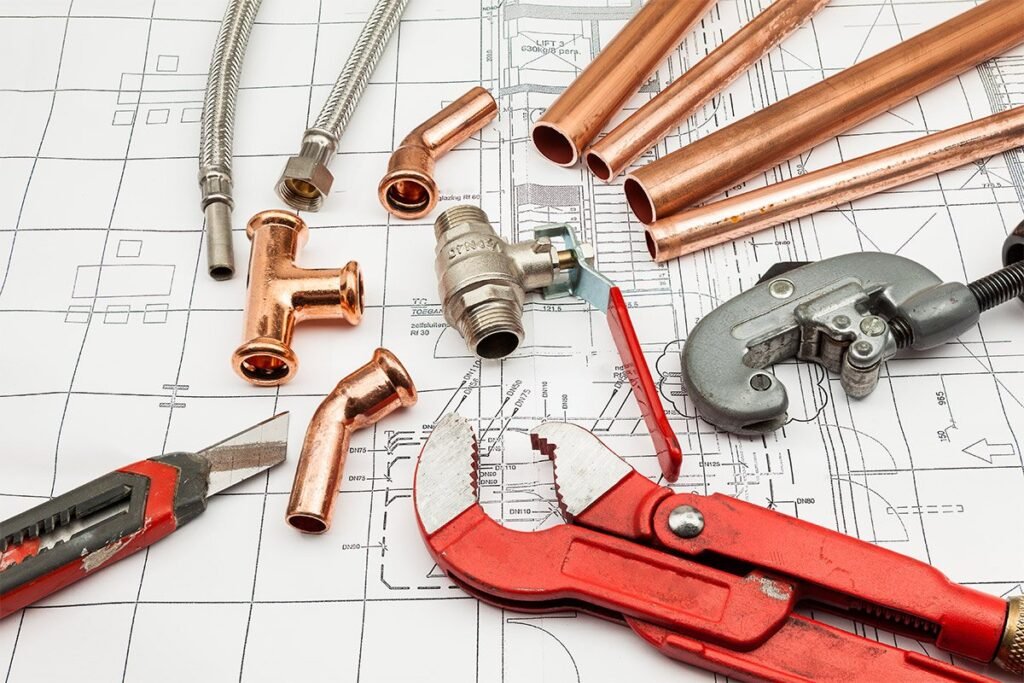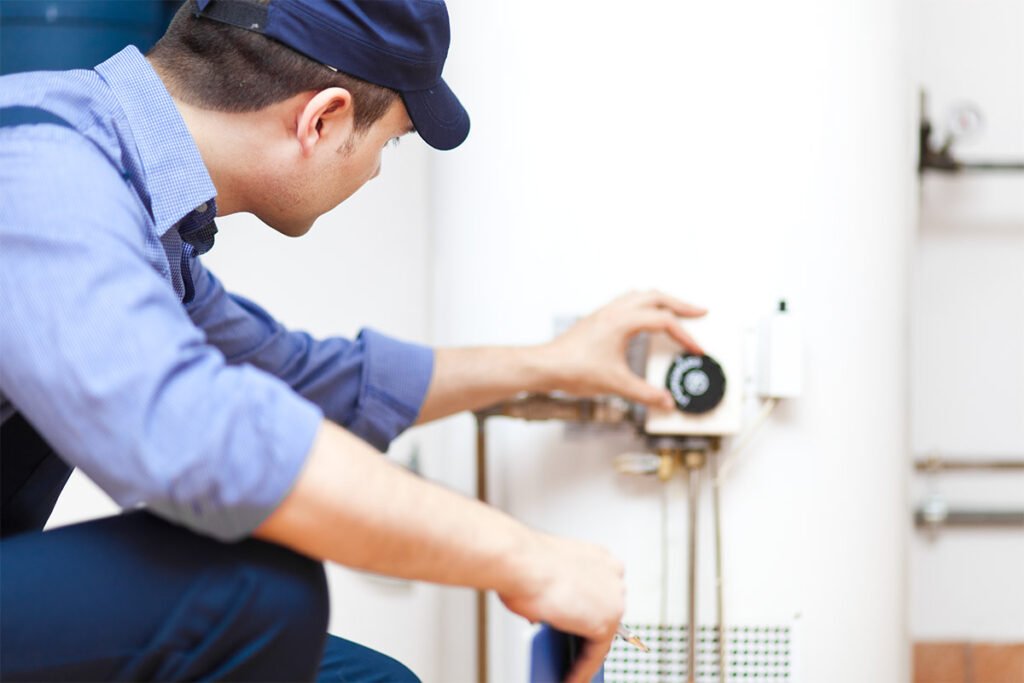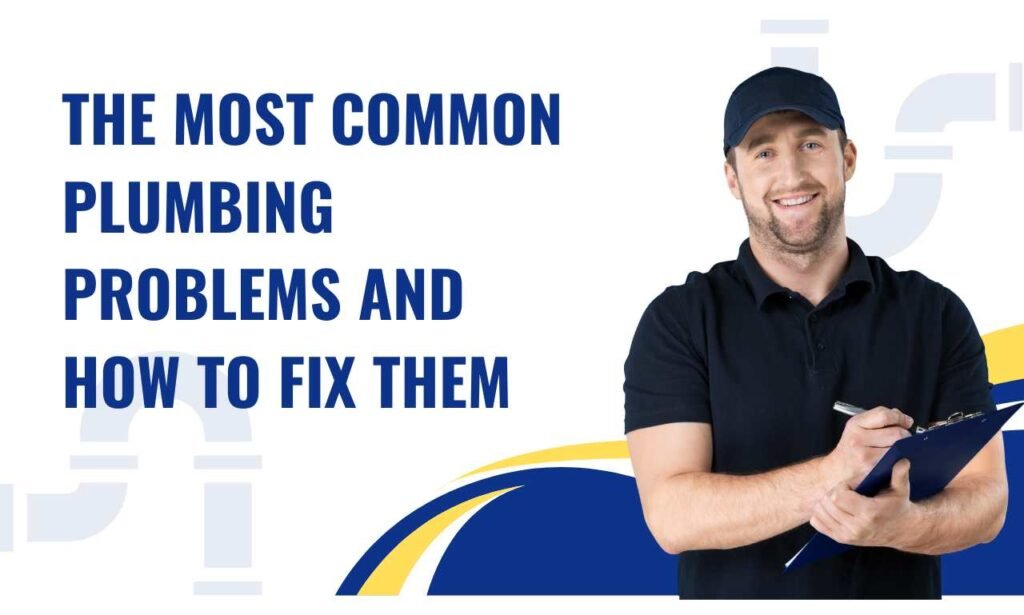The most common plumbing problems include leaky faucets, clogged drains, and running toilets. Fixing these issues often requires simple tools and basic knowledge.
Plumbing problems can disrupt daily life and lead to costly repairs. Leaky faucets waste water and increase utility bills. Clogged drains slow down water flow and can cause unpleasant odors. Running toilets waste gallons of water and hike up your water bill.
Knowing how to fix these common issues can save money and prevent further damage. Simple tools and a bit of DIY knowledge can often resolve these problems. Regular maintenance and prompt attention to minor issues can keep your plumbing system in good condition. Being proactive can help avoid major plumbing disasters.
Introduction To Plumbing Woes
Every home faces plumbing problems at some point. These issues can range from minor annoyances to major disruptions. Understanding the common plumbing problems and how to fix them is essential for every homeowner. This guide will help you navigate these challenges with ease.
The Inevitability Of Issues
Plumbing issues are unavoidable. Pipes can leak, faucets can drip, and toilets can clog. These problems arise due to wear and tear, environmental factors, or improper use. Knowing the common issues helps in identifying and addressing them swiftly.
| Common Plumbing Problem | Cause |
|---|---|
| Leaky Faucets | Worn out washer or gasket |
| Clogged Drains | Hair, soap, and debris buildup |
| Running Toilet | Faulty flapper valve |
Preventive Measures
Preventing plumbing problems saves time and money. Here are some preventive tips to keep your plumbing system in good shape:
- Regular Inspections: Check for leaks and corrosion.
- Proper Disposal: Avoid flushing non-degradable items.
- Water Pressure: Maintain optimal water pressure to prevent strain on pipes.
By following these preventive measures, you can minimize the risk of plumbing issues. Remember, a little maintenance goes a long way in ensuring a hassle-free plumbing system.
Leaky Faucets
Leaky faucets are a common plumbing problem in many homes. They can waste water and increase your water bill. Fixing a leaky faucet is often simple and can save you money.
Identifying The Cause
The first step in fixing a leaky faucet is to identify the cause. Common causes include worn-out washers, loose parts, or damaged seals. A steady drip from the spout usually points to a worn washer or O-ring.
Inspect the faucet for visible signs of wear or damage. Check the handle, spout, and base for leaks. Listen for a dripping sound even when the faucet is off. This can help identify the source of the leak.
Below is a table summarizing common causes and their symptoms:
| Cause | Symptom |
|---|---|
| Worn-out washer | Steady drip from the spout |
| Loose parts | Water leaking from the handle |
| Damaged seal | Water pooling at the base |
Step-by-step Repair
Follow these steps to repair a leaky faucet:
- Turn off the water supply to the faucet.
- Plug the sink to avoid losing small parts.
- Remove the faucet handle using a screwdriver.
- Inspect the washer, O-ring, and seals for wear.
- Replace any worn or damaged parts.
- Reassemble the faucet and turn on the water supply.
- Test the faucet to ensure the leak is fixed.
Replacing worn parts can often solve the problem. If your faucet still leaks, consider consulting a professional plumber.
Regular maintenance can help prevent leaks. Check your faucets for wear and replace parts as needed. A little effort can save you water and money.
Clogged Drains
Clogged drains are a common plumbing problem in many homes. They can cause water to back up and create a mess. Understanding the causes and solutions for clogged drains can save you time and money. Below, we’ll look at two common areas where clogs often occur: the kitchen and the bathroom.
Kitchen Sink Blockages
Kitchen sink blockages usually occur due to food particles, grease, and soap scum. These materials can build up over time, leading to a clog.
Here are some simple steps to fix kitchen sink blockages:
- Boil water and pour it down the drain. This can help to dissolve grease and soap scum.
- Use a plunger to create suction and dislodge the clog. Make sure to cover the overflow hole if your sink has one.
- Mix baking soda and vinegar. Pour half a cup of baking soda down the drain, followed by half a cup of vinegar. Wait for 15 minutes and then flush with hot water.
- Use a plumbing snake. Insert the snake into the drain and turn the handle to break up the clog.
Prevent future clogs by avoiding dumping grease and large food particles down the sink. Use a sink strainer to catch debris.
Bathroom Drain Solutions
Bathroom drains often get clogged with hair, soap, and toothpaste. These materials can create a stubborn clog over time.
Follow these steps to clear bathroom drain clogs:
- Use a drain cover. This can prevent hair and soap from entering the drain.
- Pour boiling water down the drain to soften any buildup.
- Mix baking soda and vinegar. Pour half a cup of baking soda followed by half a cup of vinegar down the drain. Wait 15 minutes, then flush with hot water.
- Use a plunger to create suction and remove the clog.
- For stubborn clogs, use a plumbing snake. Insert it into the drain and twist to break up the blockage.
To prevent bathroom drain clogs, regularly clean the drain cover and avoid letting large amounts of hair go down the drain.
Running Toilets
Running toilets are one of the most frequent plumbing issues. They can waste a significant amount of water. Fixing them can save you money on your water bill. Here, we explore the common causes and how to fix them.
Common Culprits
- Faulty Flapper: The flapper in the tank may be worn out or misaligned.
- Chain Problems: The chain connecting the flapper to the flush lever might be too short or tangled.
- Float Issues: The float can be set too high, causing water to overflow.
- Fill Valve: A malfunctioning fill valve might not shut off properly.
Diy Fix Guide
Follow these simple steps to fix a running toilet:
- Check the Flapper: Open the tank lid. Inspect the flapper for any damage. If it looks worn out, replace it.
- Adjust the Chain: Ensure the chain has enough slack. It shouldn’t be too tight or tangled.
- Set the Float: Adjust the float to the correct level. This prevents water from overflowing.
- Inspect the Fill Valve: If the fill valve is defective, replace it with a new one.
These steps can help you fix most running toilet issues. If the problem persists, consider calling a professional plumber. Taking action promptly can save water and reduce your utility bills.
Low Water Pressure
Low water pressure can be a frustrating problem in any household. It can make showers less enjoyable and dishwashing more difficult. Understanding the causes and how to fix them can save you a lot of hassle.
Finding The Root Problem
To fix low water pressure, you first need to identify the source. This can involve checking different areas around your house.
- Check your faucets: Are all faucets affected or just one? This can help narrow down the issue.
- Inspect the water meter: Look for leaks or blockages. Sometimes, debris can clog the meter.
- Examine the pipes: Older pipes can become corroded and reduce water flow.
If you spot any visible issues, take note. This will help you or a plumber fix the problem quickly.
Restoring Pressure
Once you know the cause, you can start to restore the water pressure. Follow these steps:
- Clean faucet aerators: Sediment can build up. Unscrew the aerator and clean it thoroughly.
- Inspect the showerhead: Remove it and soak it in vinegar. This will clear any mineral deposits.
- Check the pressure regulator: Adjust it if necessary. If broken, consider replacing it.
If these steps don’t work, you might need to call a professional. Sometimes, the issue can be more complex.
| Problem Area | Possible Cause | Solution |
|---|---|---|
| Single Faucet | Clogged Aerator | Clean or Replace Aerator |
| Whole House | Pressure Regulator Issue | Adjust or Replace Regulator |
| Old Pipes | Corrosion | Replace Pipes |
Understanding and addressing low water pressure can make your daily tasks much easier. Always start by finding the root problem. Then, take the right steps to restore pressure.
Water Heater Issues
Water heater issues are common in many homes. They can be frustrating and inconvenient. Understanding the signs and solutions can help. This section will explain common water heater issues and how to address them.
Troubleshooting Tips
Here are some tips to troubleshoot your water heater problems:
- No Hot Water: Check the thermostat settings. Ensure the pilot light is on.
- Inadequate Hot Water: Adjust the thermostat. Check for sediment build-up in the tank.
- Water is Too Hot: Lower the thermostat setting.
- Strange Noises: Flush the tank to remove sediment.
- Leaking Tank: Inspect all connections. Replace the tank if the leak persists.
Regular maintenance can prevent many water heater issues. It’s essential to keep an eye on your system.
When To Call A Professional
Some issues require a professional plumber. Here’s when to call one:
- Persistent Leaks: If your tank continues to leak, it needs expert attention.
- No Hot Water After Troubleshooting: If basic fixes don’t work, a professional can diagnose the problem.
- Strange Smells: If you smell gas or burning, shut off the heater and call a professional immediately.
- Electrical Issues: If you suspect electrical problems, it’s safer to get professional help.
- Complex Repairs: For tasks like replacing the thermostat or heating elements, a plumber is best.
Knowing when to call a professional can save you time and prevent further damage. It’s important to act quickly for any severe issues.
Sewer System Backup
A sewer system backup can be a homeowner’s worst nightmare. It is essential to identify the issue early and take immediate action. This section will guide you through recognizing the signs and symptoms and the immediate steps to take.
Signs And Symptoms
- Slow Draining Water: Water drains slowly in sinks, showers, and tubs.
- Gurgling Sounds: Listen for gurgling noises from the toilet or drains.
- Foul Odors: Bad smells coming from drains indicate a blockage.
- Water Backing Up: Water backs up in unexpected places, like the bathtub.
Immediate Actions
Once you notice the signs of a sewer system backup, take these immediate steps:
- Stop Using Water: Cease all water use to prevent further backup.
- Check the Cleanout: Locate and check the sewer cleanout for blockages.
- Use a Plunger: Attempt to clear minor clogs with a plunger.
- Call a Professional: If the problem persists, contact a licensed plumber.
By identifying the signs and symptoms early and taking immediate actions, you can mitigate the damage caused by a sewer system backup.

Frozen Pipes
One of the most common plumbing problems during the colder months is frozen pipes. When temperatures drop, the water inside pipes can freeze, causing blockages and even bursts. Knowing how to prevent and fix this issue is crucial for maintaining a healthy plumbing system.
Prevention During Winter
Preventing frozen pipes starts with proper insulation. Insulate your pipes using foam pipe sleeves or heating tape. Focus on areas exposed to cold, like basements and attics.
- Keep garage doors closed to protect water supply lines.
- Open kitchen and bathroom cabinet doors to let warm air circulate.
- Let cold water drip from faucets. This keeps water moving and prevents freezing.
Set your thermostat to the same temperature day and night. This helps maintain consistent warmth throughout the house.
Thawing Procedures
If your pipes freeze, act quickly to prevent them from bursting. First, locate the frozen section of the pipe. Look for frost or bulging.
- Turn off the water supply to reduce pressure.
- Open the faucet connected to the frozen pipe. This allows water to escape once it melts.
- Use a hairdryer or heat lamp to gently thaw the pipe. Start near the faucet and work your way back.
Avoid using open flames or extreme heat. These can damage pipes or cause fires.
For more severe cases, you may need to call a professional plumber. Ensuring your pipes are properly thawed can prevent further damage and costly repairs.
Conclusion: Maintaining Plumbing Health
Maintaining your plumbing system can save you from costly repairs and potential water damage. By performing regular checks and knowing when to seek professional help, you can ensure your plumbing stays in top shape.
Regular Checks
Regular inspections can prevent minor issues from becoming major problems. Start by checking for any leaks under sinks and around faucets. Even a small drip can indicate a bigger issue.
Inspect your pipes for any signs of corrosion or rust. Corroded pipes can lead to leaks and water damage. Make sure to also check your water heater. Look for any signs of leaks or rust around the tank.
Here’s a quick checklist for regular plumbing maintenance:
- Check for leaks under sinks and around faucets
- Inspect pipes for corrosion or rust
- Examine your water heater for leaks or rust
- Test your water pressure
- Ensure all drains are running freely
When To Seek Help
Some plumbing issues require professional help. If you notice any of these signs, call a plumber:
- Persistent low water pressure
- Water discoloration
- Frequent clogs in your drains
- Unusual noises from your pipes
- Visible water damage or mold growth
Plumbers have the tools and expertise to fix complex problems. They can quickly diagnose and repair issues, saving you time and money in the long run.
Remember, maintaining your plumbing health is essential for a safe and comfortable home. Regular checks and knowing when to seek help can make a big difference.

Frequently Asked Questions
What Is The Most Common Problem In A Plumbing System?
The most common plumbing problem is clogged drains. Hair, grease, and debris often block pipes, causing slow drainage.
How To Stop Plumbing Issues?
Regular maintenance prevents plumbing issues. Inspect pipes, fix leaks promptly, avoid flushing non-degradable items, and insulate pipes in winter.
How Do You Diagnose Plumbing Problems?
To diagnose plumbing problems, inspect for leaks, check water pressure, and listen for unusual sounds. Use a camera for hidden issues.
What Is A Common Mistake In Plumbing?
A common plumbing mistake is using the wrong pipe size. This can lead to leaks and poor water pressure. Always match the pipe size to the system requirements. Proper connections and fittings are also essential to avoid issues.
Conclusion
Plumbing issues are common but manageable with the right knowledge. Addressing these problems promptly can save time and money. Regular maintenance is key to preventing major issues. Always consult a professional for complex problems. Keep your plumbing system in top shape to ensure a smooth, hassle-free experience.






